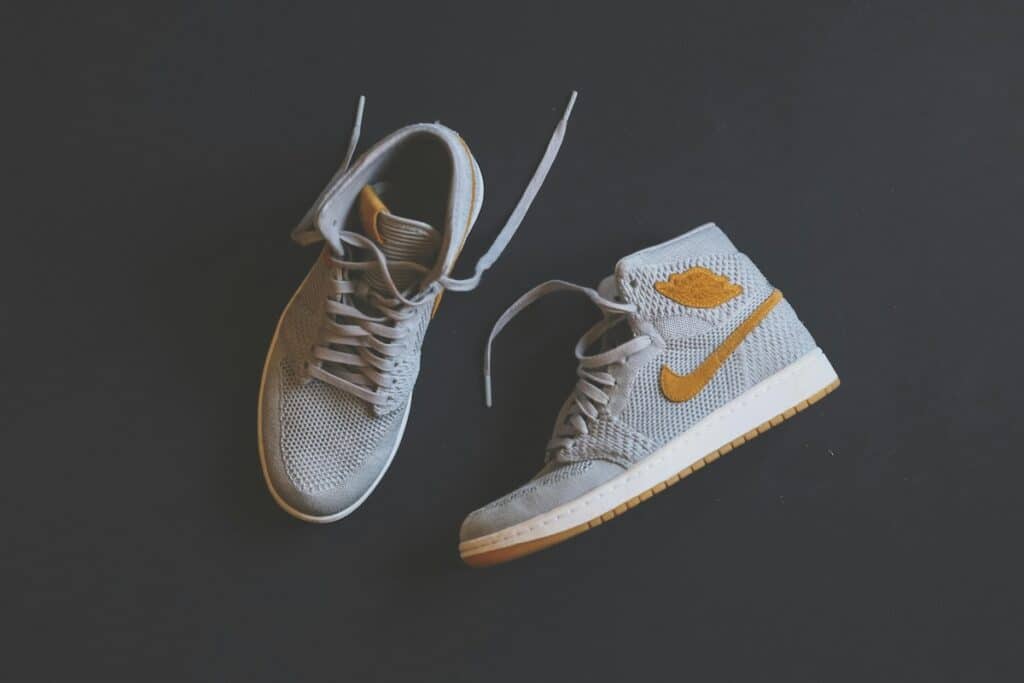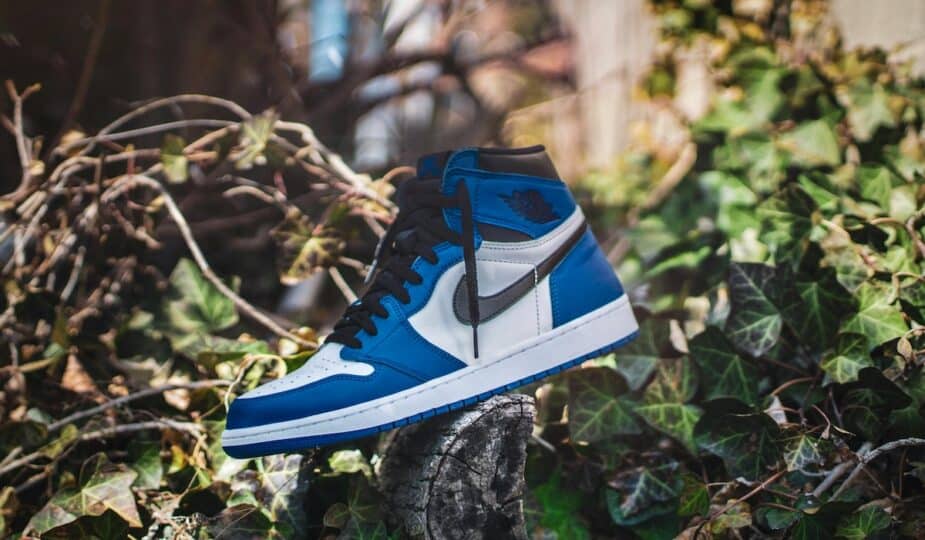Chloe from Fashion-Era
We all know about Nike and its famous Jordan sneakers. However, do you know the real history behind the Nike Air Jordan? Nike is a big player in the sportswear and fashion industry today, but it once had a humble beginning.
In the quest for glory, Nike struck a deal that has been the game changer for the brand.
In this article, we will uncover the history behind one of the most famous sports marketing collaborations ever. It is a Nike and Jordan collaboration.
Read on to discover the sportswear giant's origins and the agreement that made this brand one of the top players in the market.
How Did Nike start?
Nike started on 25 January 1964 as a distributor for a Japanese shoe company formerly known as Onitsuka Tiger Shoes, now Asics. It released its first shoe, the Nike Cortez, in 1972.
Today, Nike has evolved to be one of the leading names in the sportswear and footwear industry. They have collaborated with famous celebrities.
They made some of the greatest collections, like the Jordan and Kobe Bryant basketball shoes.
However, in the 1980s, Nike was not as popular as it is today.
Like every other brand, they were trying to make a name in the market, so they ventured into basketball.
The co-founder of Nike, Phil Knight, a former sportsman himself, was looking for stars in the NBA. He then chose a rookie who, although at the start of his career, was already becoming a top player in the NBA.
So, Phil Knight took a gamble on the young Michael Jordan, trusting Nike's success on an incredible talent with great marketability potential.
In 1984, Michael Jordan signed a five-year 2.5 million USD partnership deal and became the new face of Nike.
The endorsement deal was three times more than any deal in the National Basketball Association (NBA) at that time. In 1985, Michael Jordan debuted the Air Jordan 1 in a preseason game.
How Did Nike Sign Michael Jordan?
Adidas, Converse, and New Balance dominate the basketball footwear market. It would seem impossible for a new company to enter the competition and make big profits.
So, they did something out of the norm, putting the future of their basketball market in the hands of an uprising star in the NBA.
The collaboration faced a big hitch at the start.
This was because Michael Jordan was unwilling to become the face of a then-unpopular company. The company was still struggling to make a name in the market. Adidas was not interested in signing Michael Jordan.
This was after a tough business season due to the death of the founder and his wife.
Furthermore, Converse, a brand Michael Jordan wore in his varsity basketball days, had a meeting with him.
However, they could not agree. Michael Jordan wanted something they could not afford. Michael Jordan wanted to have a say in the style of the shoes they would make for him.
Nike would later offer him this.
Despite Nike's willingness to create special shoes for him and accept his input on the design, Michael Jordan still did not want to sign with them.
David Falk, Michael Jordan’s agent at the time, had tried to convince him. Then, he spoke to Michael Jordan’s mother, who compelled Michael Jordan to see what Nike had to offer.
During the meeting, the Nike team convinced Michael Jordan to sign because he was pleased with the design of the special red and black sneakers.
This deal was a gamble for both parties. Michael Jordan was committing to an unknown brand, and Nike was giving a huge amount of money to a rookie.
The deal was for $500,000 per year for five years. It also included stock options.
These options could let him earn up to $7,000,000 by the end of his contract. At that time, the biggest contract in the NBA was for James Worthy.
He had an eight-year deal for $150,000 a year with New Balance. However, the Nike-Jordan deal turned out to be one of the best decisions for both parties.
How Did the Air Jordan Collection Become Popular?
Nike had put clauses in the contract with Michael Jordan. He had to meet them within three years or else they could cancel the contract. The demands were:
- Rookie of the Year award
- Become an all-star
- Average a minimum of 20 points per game in a season
Nike mandated him to achieve at least one of these milestones to be tied to the contract. Thankfully, he completed all of them in his rookie year.
In the 1986/87 season, Micheal Jordan averaged 37.1 points per game, drawing the spotlight to himself. The team at Nike was brilliant.
They cashed in on his talent and rising popularity with fans of the game. They did this by connecting his success on the court to his shoes, the Air Jordan, in many ads.
He had consistent, record-breaking seasons. Some of his records still stand. Michael Jordan was on the lips of every basketball fan.
Automatically, his specials, the Air Jordan, sold almost effortlessly.
The uniqueness and beauty of the Air Jordan series has undoubtedly enjoyed global patronage due largely to the fact that it is tied to a legend of the sport: Michael Jordan.
The Controversy of the Air Jordan 1
The Air Jordan 1 sneakers were a simple design by Peter Moore, and they fit well amongst the shoes of other players. However, the colors (red and black) would catch the eyes of everyone for many reasons.
The NBA quickly banned Air Jordan for not complying with the uniform policy that mandated all shoes be primarily white. If any other colors must be included, it must be that of the team's uniform.
The Bread Colorway, as fans called it, led to Michael Jordan being fined $5,000 for each game he played in the Air Jordan 1. Nevertheless, instead of following the rules, Nike told Michael Jordan to continue with the shoes, and they paid the fine.
Thus, they turned the controversy into a huge marketing campaign. It saw them sell 1.5 million pairs within six weeks of its release.
The Evolution of the Jordan Line
The success of the Air Jordan 1 caused the design and release of many more Air Jordan models. Each Jordan had its unique design and colorway, making it a must-have for not just basketball fans but sneaker enthusiasts at large.
Air Jordan 1 and 2 were successful. Peter Moore and Bruce Kilgore designed them. After their launch, Michael Jordan felt his shoes could do better. He saw his game had moved up a notch.
Nike brought in Tinker Hatfield. He was a new designer with fresh ideas. They did this to stop Michael Jordan from going to Adidas. Fans were not interested in Adidas.
Tinker allowed Michael Jordan to influence the style and design of his first project. It was the Air Jordan 3.
He gave him more say than he had on the previous designs. It was a huge hit in the market. The Air Jordan is now not only sporty but fashionable, as it incorporated technology that transformed the shoe game.
On September 9, 1997, Michael Jordan took more control of his shoe line. The Jordan brand was created and made a subsidiary of Nike, allowing it to operate its brand. Today, the Jordan brand is one of the most popular sneakers in the footwear market.
What is the Air Jordan logo?

The Air Jordan logo for series one and two was different from the subsequent series as it was part of the change Tinker Hatfield brought.
The first logo was a basketball with three overlapping wings. A banner over the ball says "Air Jordan." He called this design the "Jordan Wings Logo."
It revolves around Michael Jordan's ability to soar while going for a slam dunk.
When Tinker Hatfield took over from his predecessors Peter Moore and Bruce Kilgore, he wanted a fresh look for the new Jordans.
The new logo now is a silhouette of Micheal Jordan going for a slam dunk. The "Jumpman” logo, as we know it, features Micheal Jordan leaping through the air with a basketball in his left hand and his legs spread apart.
It was designed by the original designer of Air Jordan, Peter Moore, who said a photo of Micheal Jordan before he got drafted Into the NBA inspired it.
However, the logo caused some legal issues. Jacobus Rentmeester is a photographer. He said that Nike had stolen his idea for a picture of Michael Jordan.
Rentmeester took the picture during a Life Magazine photo shoot at the University of North Carolina. At the time, Jordan wore a pair of New Balance shoes before signing with Nike.
In January 2015, Rentmeester sued Nike for copyright infringement and asked for compensation. Nike initially paid him $15,000 for permission to continue using the “Jump Man” logo for another two years. However, Rentmeester was not satisfied, as Nike continued to use the “Jump Man” logo past the two years they agreed to.
Then, a court in Oregon ruled that the Nike “Jump Man” logo didn't infringe copyright. It said that, although it is similar, it is not a direct copy of Rentmeester's photo.
Thus, Nike has continued to use the logo to date.
The Continuous Success of the Nike and Jordan Collaboration
To this day, Air Jordan continues to sell over any shoe line for current or retired basketball players. In 2019, Forbes reported that the Jordan brand made $130,000,000 each year.
This is despite the fact that the basketball legend has not played for over 20 years.
The Nike and Jordan collaboration is successful. It paved the way for other athletes to earn off the field with their signature shoes.



